The Bay Mudflats on South Pedro Island - Part 1 - Roseate Spoonbill & Tricolored Heron
/During the two months I spent avoiding the snow and ice in Colorado by birding in the Rio Grande Valley in south Texas, I especially enjoyed birding the mudflats on the bay side of South Pedro Island. Padre Island extends along the Gulf of Mexico in Texas from Corpus Christi south to Port Isabel, a distance of about 130 miles. The Laguna Madre separates the barrier island from the mainland. South Padre Island became separate from North Padre Island (Padre Island National Seashore) when a navigable waterway into the Gulf of Mexico (the Port Mansfield Channel) was built in the 1950s.
The bay mudflats on South Padre Island are a short distance north of the South Padre Island Convention Center. A sand trail (marked Drivable Trail) can be used to reach areas (represented by the camera) suitable for photographing the areas (symbolized by the rectangle) where the pelicans, gulls, terns, skimmers, raptors, and shorebirds may have gathered at the edge of the changing tide. The upward directing arrow points to images of birds photographed at such a location. Also, at low tide, a vehicle can be driven on the mudflats and used as a moveable blind to photograph birds feeding in the smaller residual pools of water in the area.
A panorama illustrating one such gathering observed on December 15, 2023.
The out-of-focus pelicans and other birds at the top of the image are at the edge of the tide. The Great Blue Heron is strolling behind several pools of water where wading birds, shorebirds, raptors, gulls, and terns are often found actively feeding.
A variety of species are often seen feeding in the same small pool of water. In this photo taken on January 13, 2024, a Snowy Egret, white morph Reddish Egret, Yellowlegs, and Common Merganser are sharing the same small pool.
Because of the proximity of the birds in the small pools, I was sometimes able to capture, in the same image, dramatic differences in the physical features of the birds, as well as the methods used to search for, capture, and consume prey.
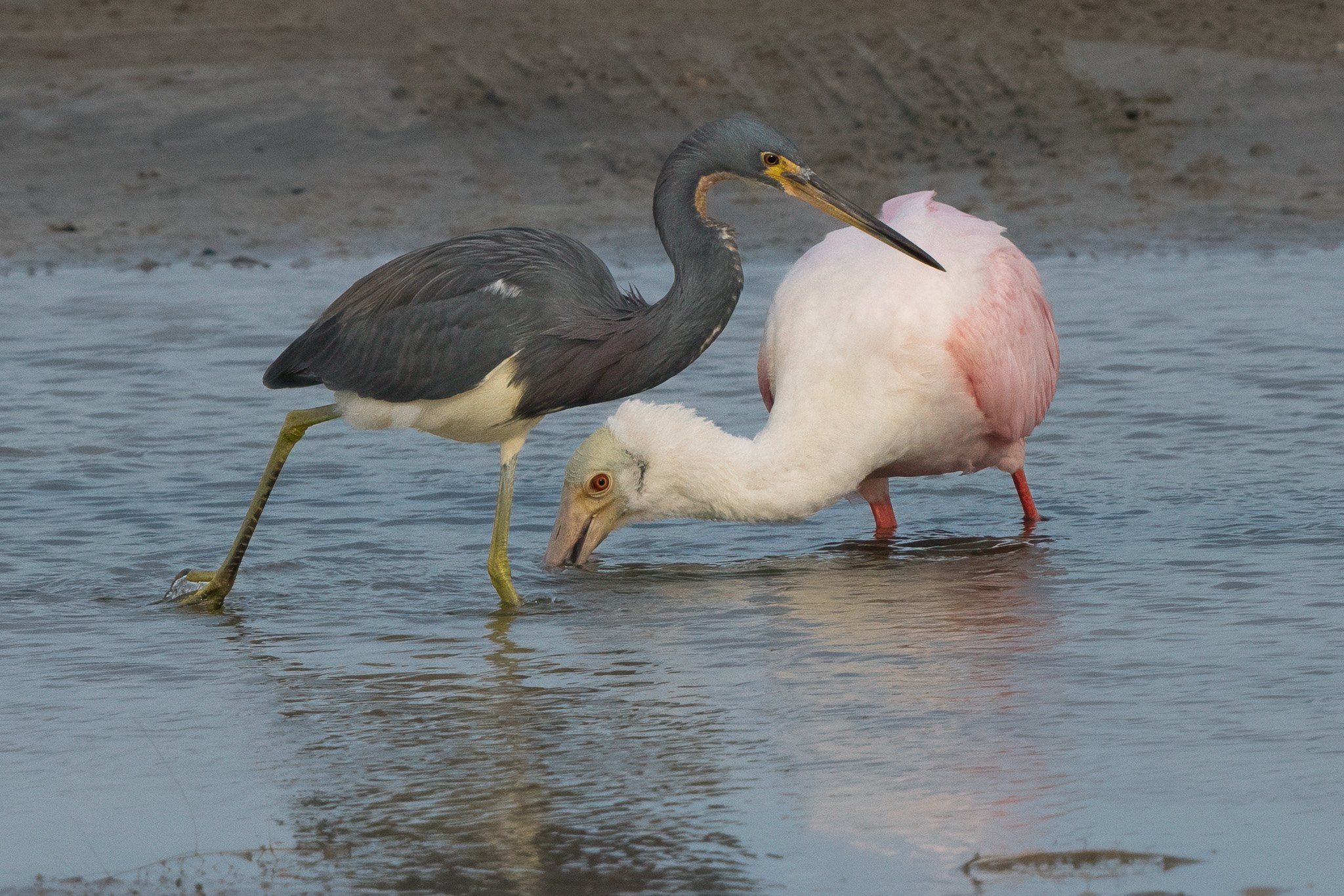
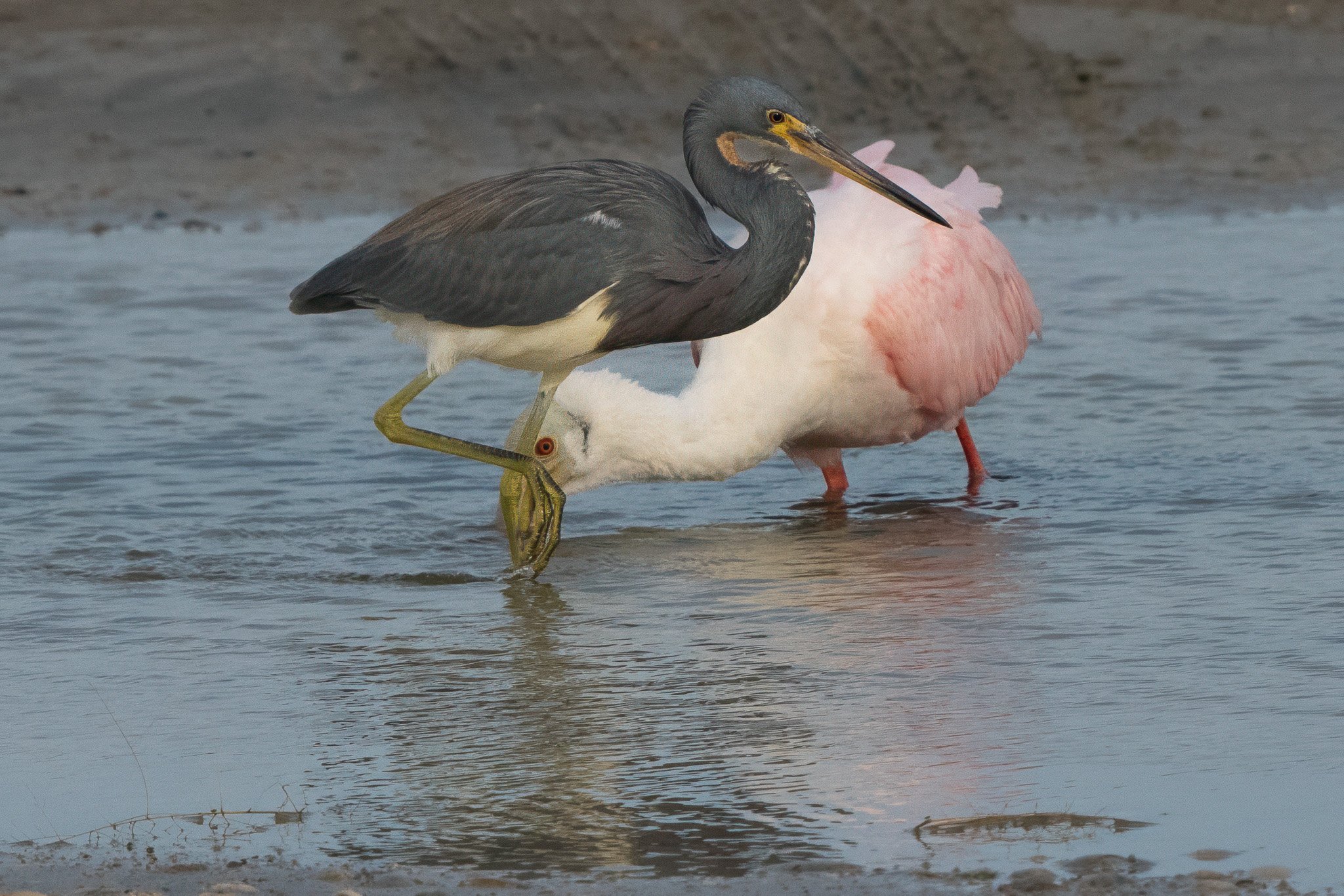
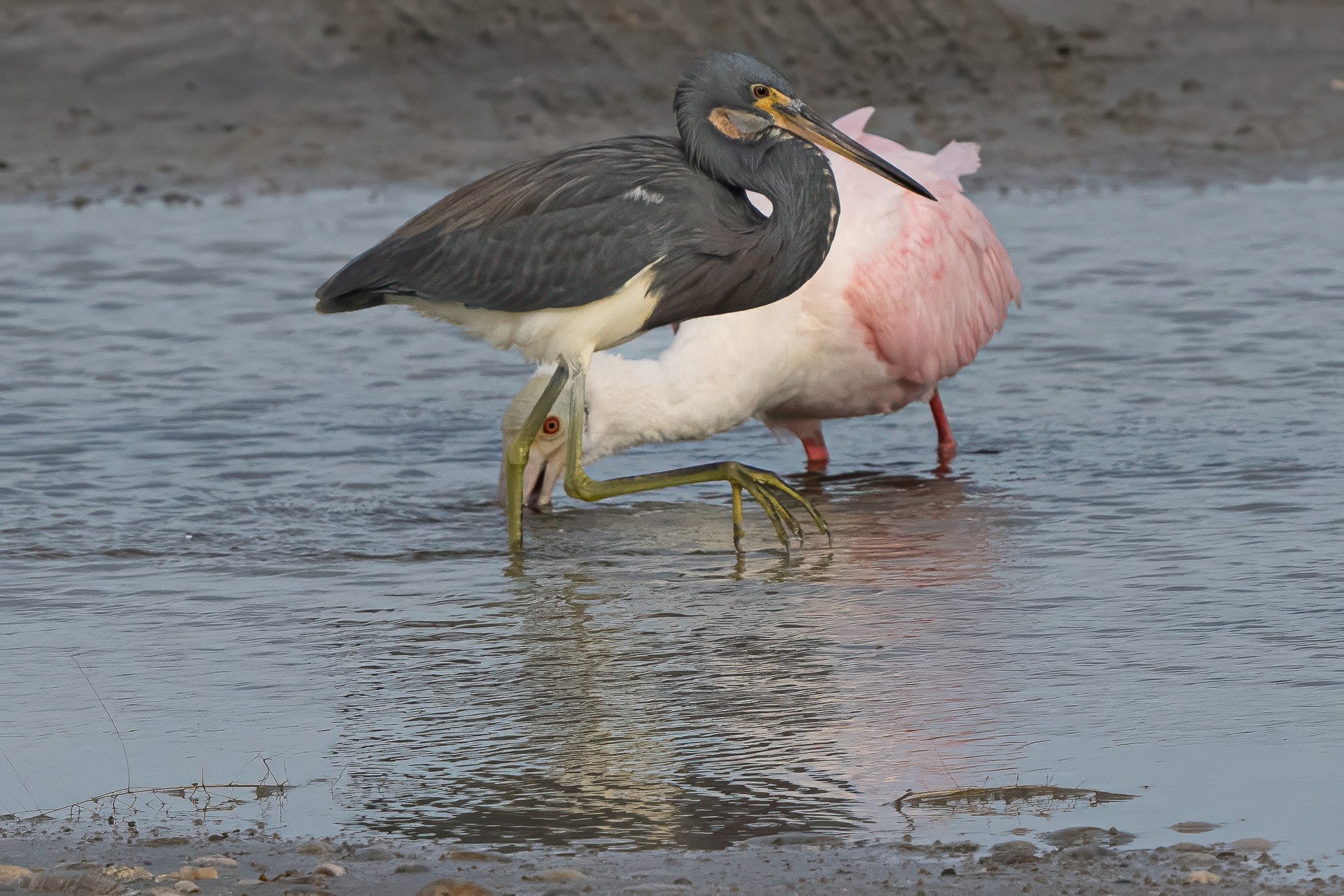
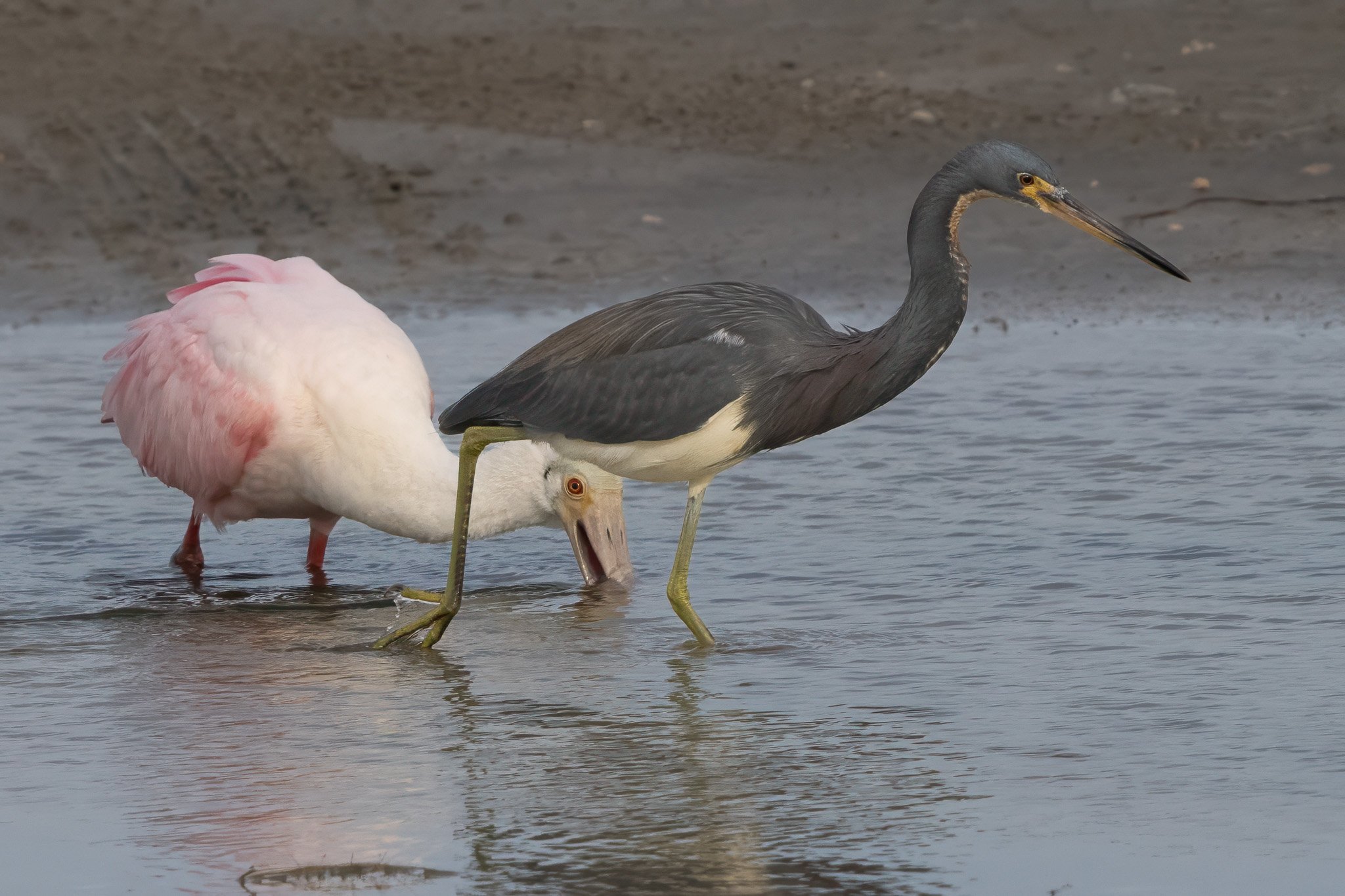
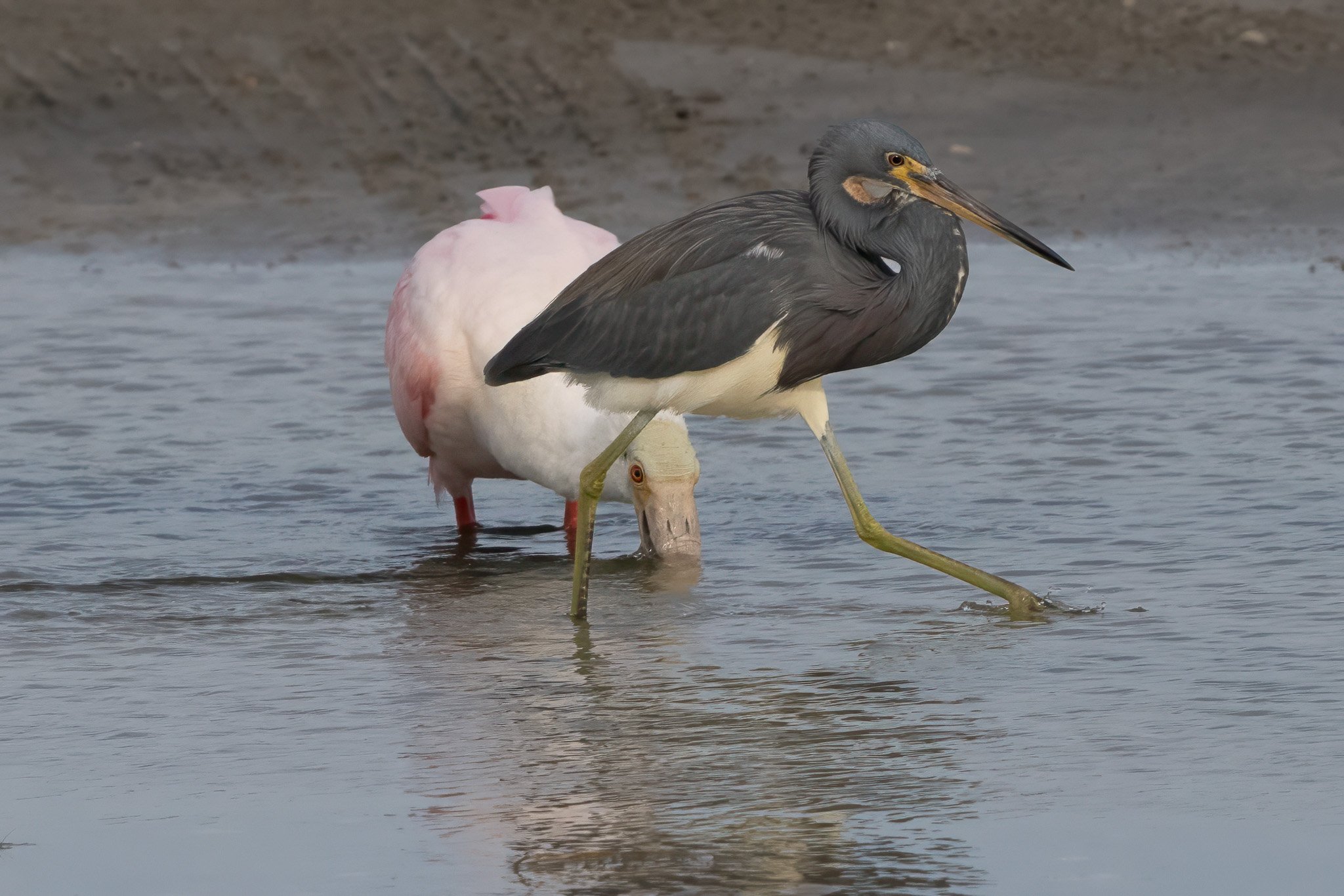
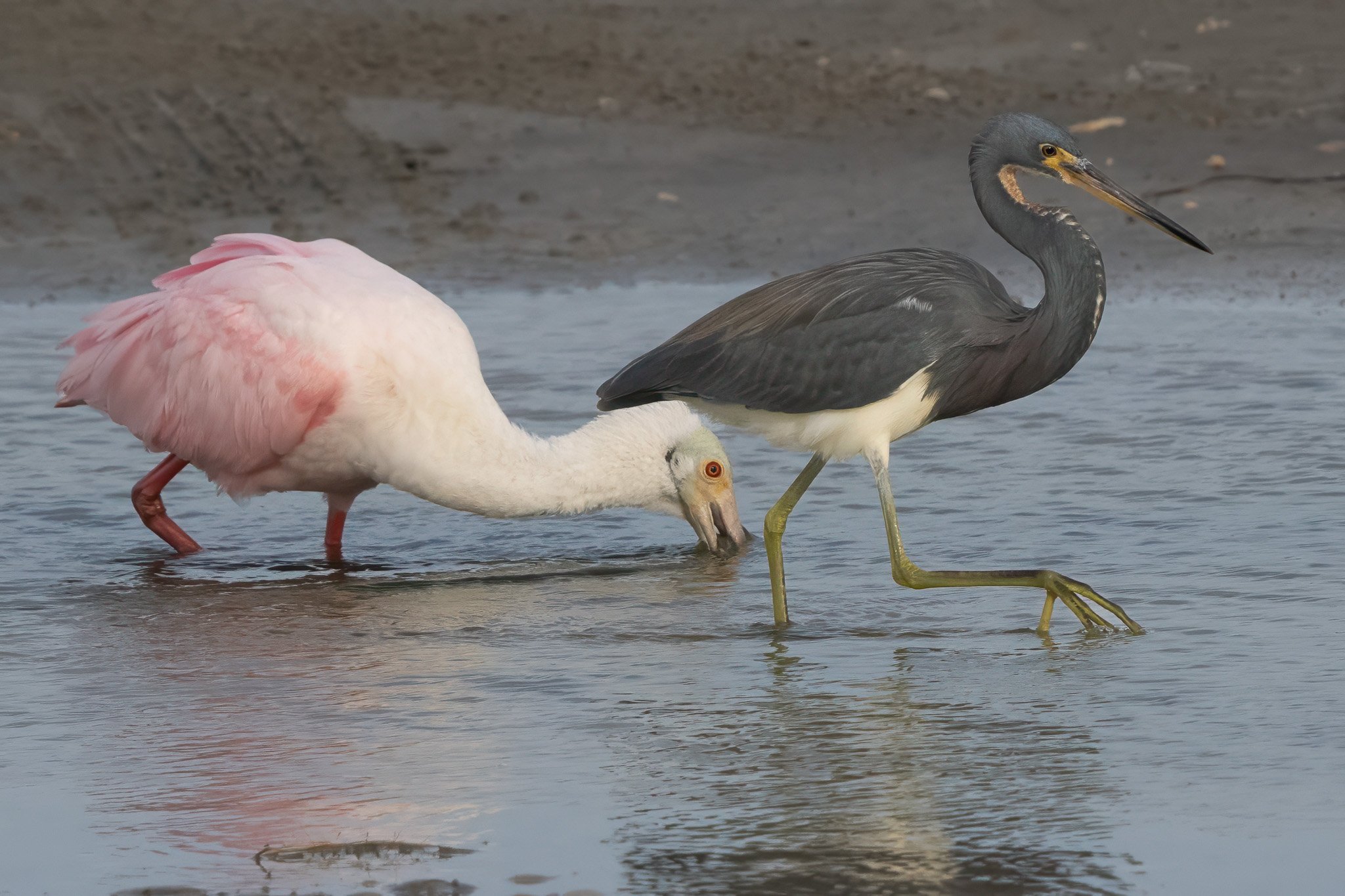
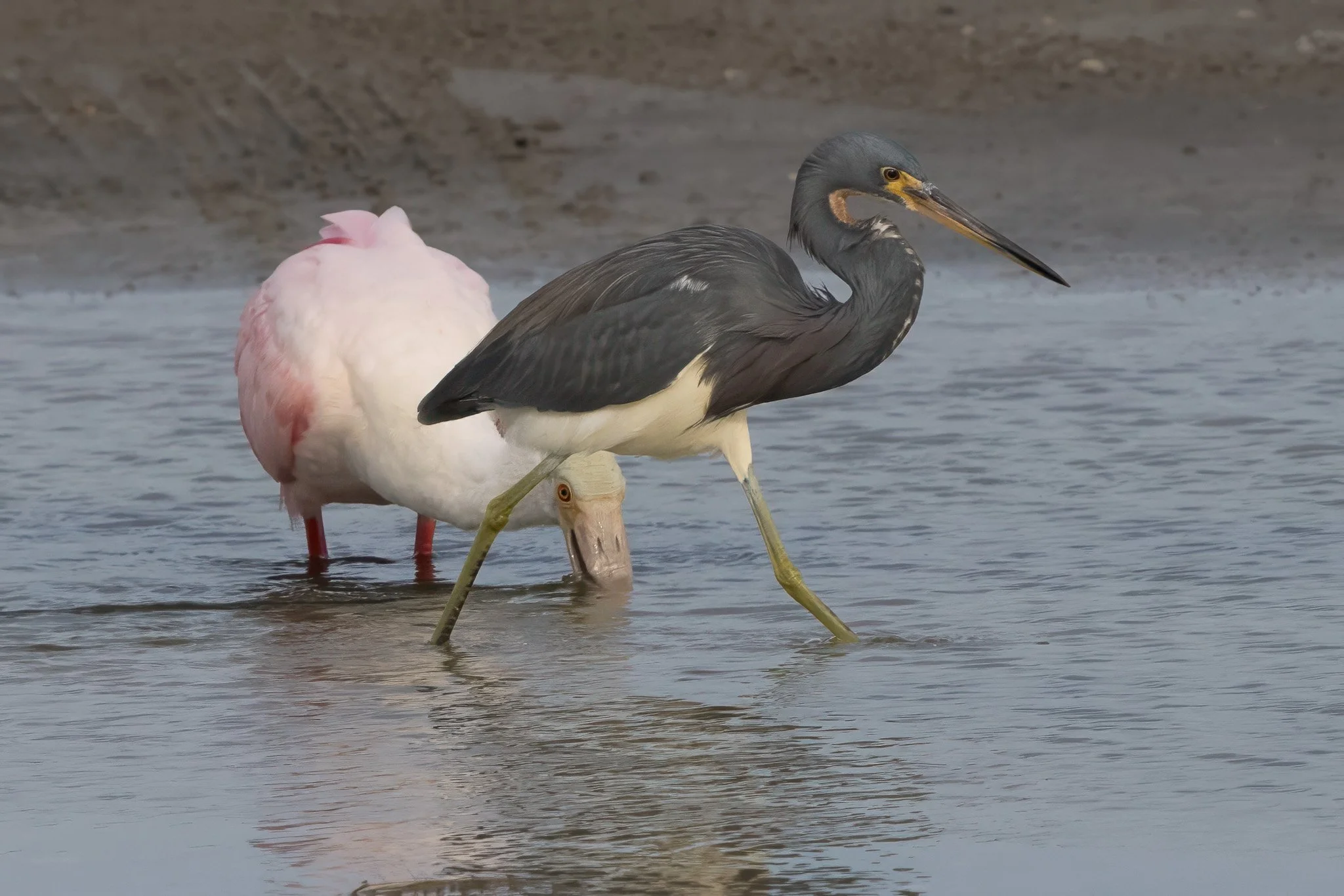
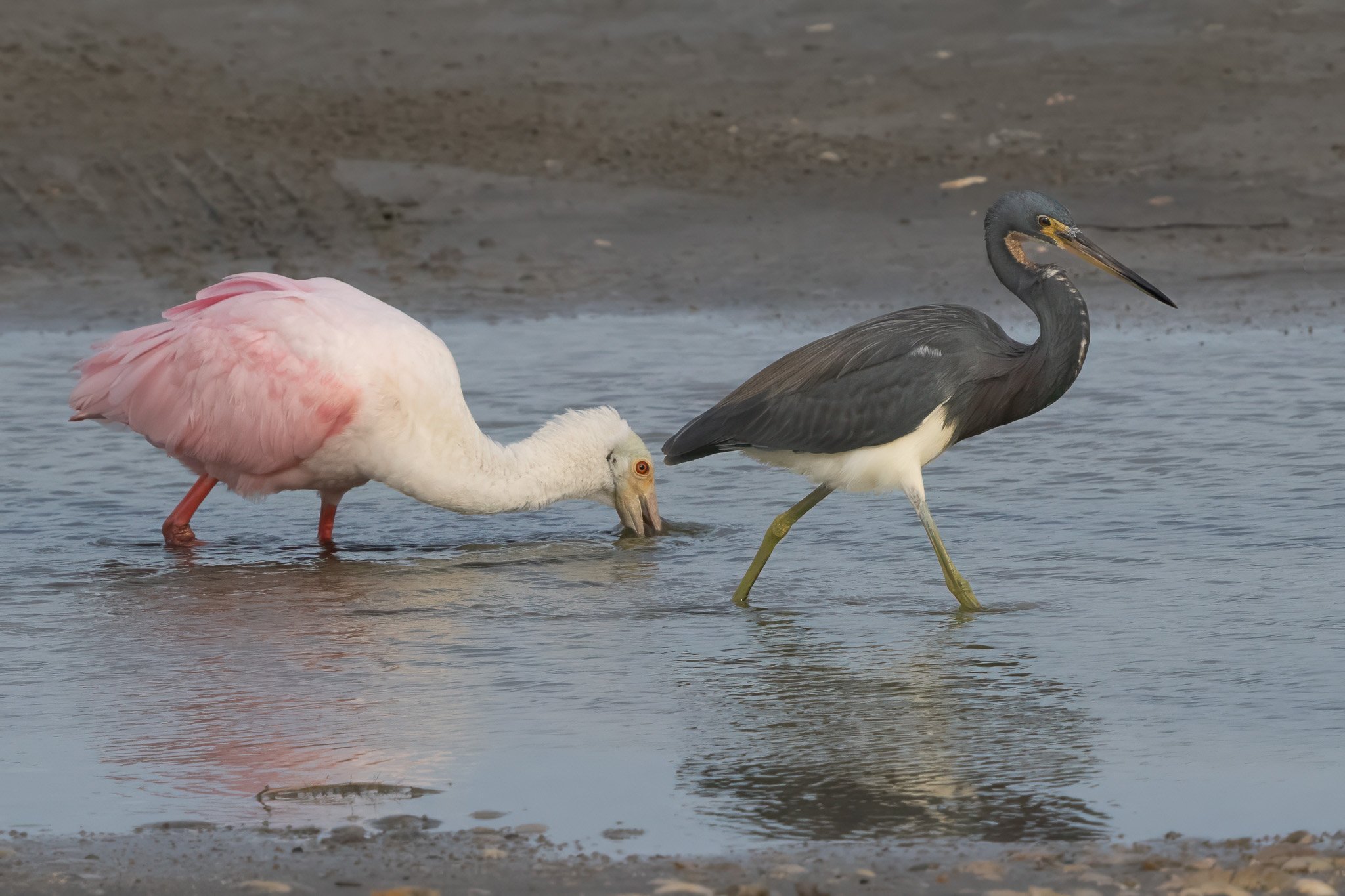
Click on the arrows to view 8 images of a Roseate Spoonbill and a Tricolored Heron feeding in one of the pools on January 13, 2024. This series focuses on the differences in methods of feeding and the unusual positions of the birds relative to each other. Subsequent blog entries will highlight other differences that were observed in this type of setting.

